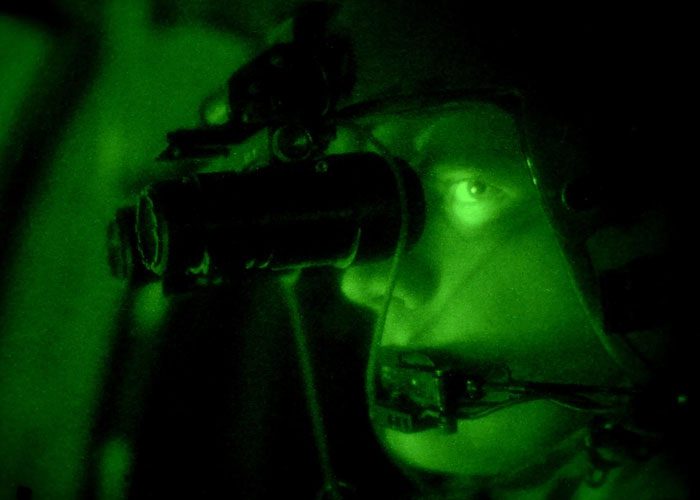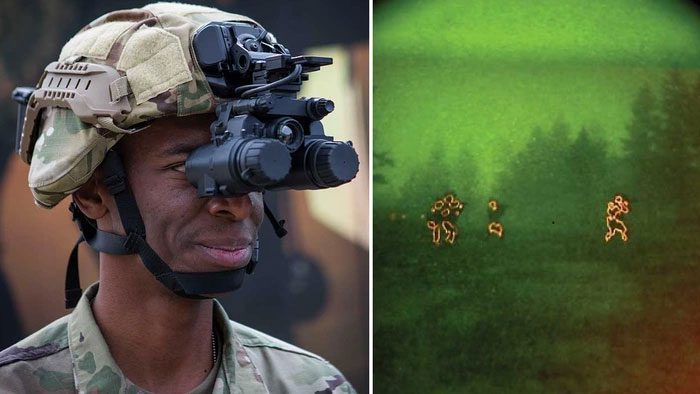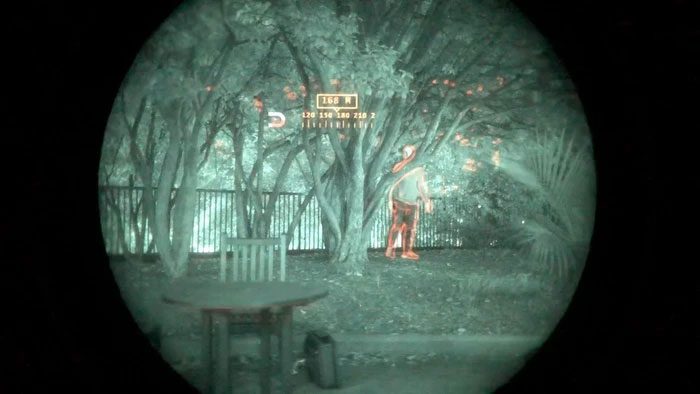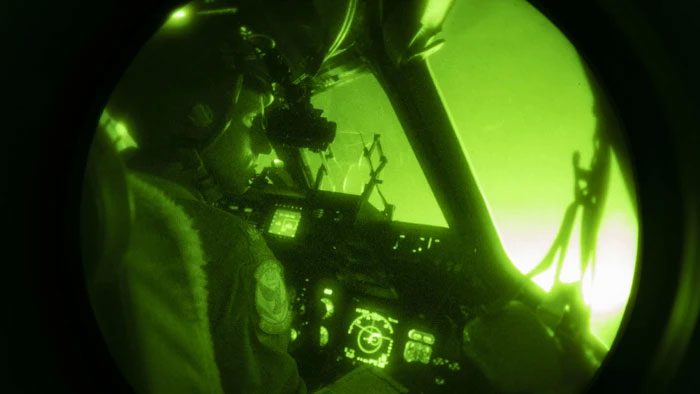Night vision devices typically amplify the faint levels of light available at night or utilize the heat emitted by various objects to observe in darkness.
How Do Night Vision Devices Work?
Today, night vision technology has made significant advancements. Particularly for devices used by agents, they can help users see a person from as far as 180 meters away even on a moonless, cloudy night. In contrast, with the naked eye, you would only be able to recognize someone under such conditions at a distance of about 10 meters.
But how do these devices work? Generally, night vision devices (NVD), also known as night observation/optical devices (NOD), operate in one of two ways:
Image Enhancement: This involves capturing the available visible light in darkness and amplifying it to a level that we can perceive.
Pure Thermal Imaging: This refers to recording the heat emitted by certain objects and “translating” it into images that our eyes can perceive. This type of technology uses a kind of light that our eyes cannot naturally see, but is produced by the objects themselves, allowing users to see that light.

The image enhancement method captures ambient light and amplifies it through electronic and chemical processes. This creates night vision glasses that display the classic bright green images we are familiar with from movies.
The first type of NVD operates in a fairly intuitive manner. There is very little light on the surface of the Earth at night, but it is not absolute darkness. There is still some diffuse light in the atmosphere. The image enhancement feature uses sensors that are much more sensitive than our eyes to capture this light, which is then amplified and transmitted to a display for our eyes to see.
For the second type, from a scientific perspective, heat is also a type of light, or more precisely, it is a form of electromagnetic radiation that is very close, but falls outside the frequency range that our eyes can perceive. Because it is just below the frequency of light that we consider red, this type of radiation is referred to as sub-red radiation: “infrared” (abbreviated as IR).

Since this type of device sees heat rather than light, it is particularly effective for security or combat missions.
Infrared radiation is the type of radiation emitted by hot objects; sunlight warms our skin because it contains a certain amount of infrared radiation. However, it is also generated and emitted by other hot objects like a cup of tea, running car engines, and humans. Without proper insulation, this radiation will spread from hot objects carrying heat.
What thermal cameras do is capture infrared radiation and convert it into visible light. The different temperatures of objects can be used to distinguish them in the dark. The amount of infrared radiation an object emits is proportional to its temperature – thus, essentially, what it sees are the varying heat levels of objects. Hotter objects will appear in brighter shades like red, yellow, or white, while cooler objects will show in darker shades like purple, blue, and black.

Today, night vision devices can amplify light over 50,000 times, and scientists continue to research and upgrade them.
Thermal imaging is particularly useful for differentiating various objects based on their temperatures, but high-end thermal cameras are delicate, bulky, expensive, and consume a lot of power. They are also hindered by relatively low refresh rates and are quite poor at providing detailed images, especially for objects with fluctuating temperatures. Thus, they are most commonly used for monitoring activities over large areas in the dark and detecting moving objects.
Meanwhile, image enhancement devices are cheaper, more compact, and more portable. They provide much better differentiation of fine details. Since they utilize reflected light, they also offer a practical way for users to navigate their surroundings.

Green is the best color for the human eye. It does not cause headaches for the shooter, and additionally, green provides good contrast when the shooter identifies a target.
Modern night vision devices utilize a combination of these methods. The most common approach is to use image enhancement features that also transfer a bit of the infrared spectrum – near-infrared – into visible light. However, the most advanced approach utilizes fused night vision, which combines thermal imaging with image enhancement in a single device. The first such devices emerged around the year 2000 and combine the benefits of both types of imaging.
Why Are Displays Always Green?
The simple answer is that these devices use phosphor to create images. In fact, phosphor is a substance that can produce a glowing effect. This means it can emit light when subjected to an electron flow.
Night vision technology can capture light and convert it into electricity. This electrical current is then passed through a screen coated with phosphor to create images.
Green phosphor is used because our eyes are most sensitive to this color and can distinguish more shades of green than any other color, allowing users to perceive more details.
Green phosphor screens are also very energy-efficient; since night vision devices cannot differentiate colors, the screens will not reproduce colors anyway. This energy-saving property is a plus, as it allows the device to operate for longer periods.


















































